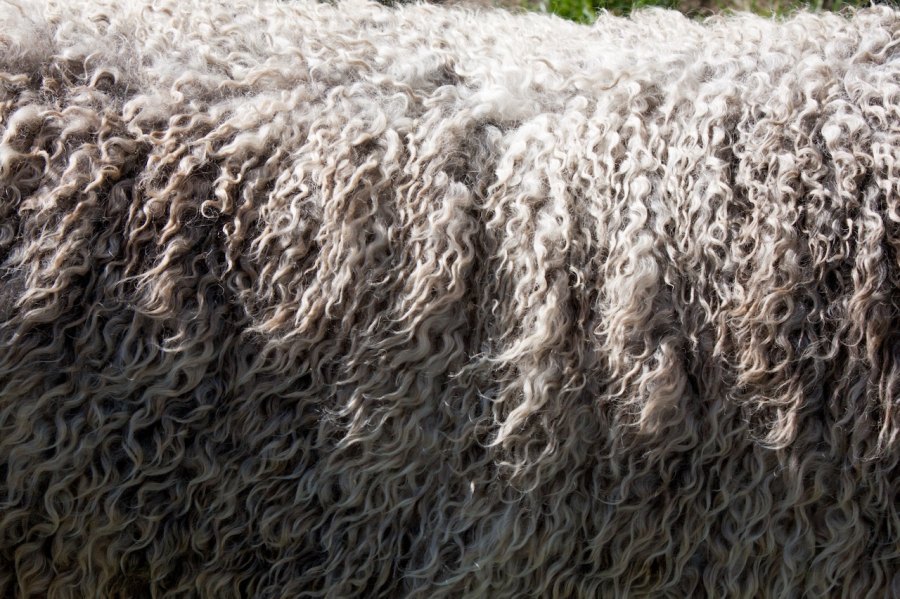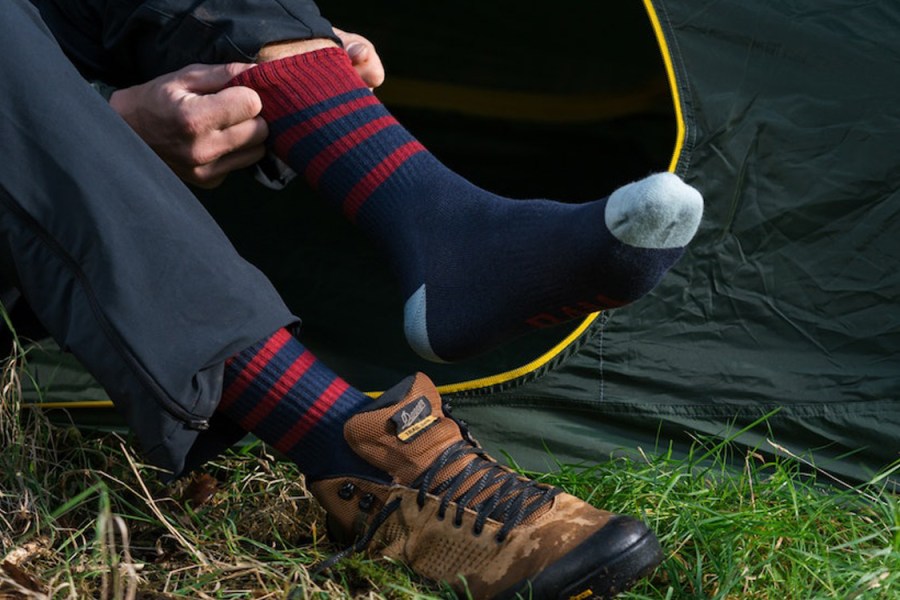Will Renwick delves into the different types of materials that are used for hiking socks and weighs up their various advantages and disadvantages
When it comes to hiking, having the right gear can make all the difference – and that counts for everything from your waterproof jacket and baselayers right down to your hiking socks. The right pair of hiking socks can keep your feet comfortable, dry, and blister-free, even on the longest of hikes. But what are the best materials for hiking socks? I’m a long-distance hiker – it’s my absolute passion – and over my years walking trails like the Wales Coast Path (870 miles), Cambrian Way (298 miles) and Camino de Santiago (490 miles), I’ve come to discover my personal preference when it comes to the best materials for hiking socks. Before sharing that, however, let’s just go through some of the options out there.
Merino wool
Merino wool is a natural fiber that is often used in hiking socks. This type of wool comes from Merino sheep, which are known for their fine and soft wool. The breed originates from Spain, but today, Merino wool comes from all over the world, including in Australia, New Zealand, and South Africa.

Merino tends to be an excellent choice for hiking socks because it’s moisture-wicking, meaning it can draw moisture away from the skin, keeping feet dry and comfortable. It’s also naturally antimicrobial, so it can help prevent odor buildup. Additionally, merino wool provides insulation, keeping your feet warm in colder temperatures and cool in warmer temperatures. Soft, breathable, and comfortable, they’re a popular choice for hikers.
Some disadvantages: Merino wool can be expensive. It’s also slow drying compared to some socks made from synthetics. This material is not suitable for vegans and it can also be unsuitable for those who have sensitive skin or a wool allergy.
Synthetic Fibers
Synthetic fibers, such as polyester, nylon, and spandex, are often used in hiking socks because they are lightweight, durable, and quick-drying. They can also be blended with other materials to enhance their performance, such as adding spandex for stretch or nylon for durability. Synthetic fibers are a popular choice for hiking socks because they are often less expensive than natural fibers, and they are easy to care for.
Some disadvantages: Synthetic materials are known to retain odor, even after repeated washing. Some synthetics, such as polyester, can be less breathable than natural materials like merino wool and this can lead to overheating and discomfort. There’s also the environmental factor, as many synthetic materials are made from non-renewable resources, such as petroleum. Fortunately, many brands are starting to address this by using recycled and recyclable materials.
Cotton
Cotton is a common material for clothing and socks, but it’s generally not recommended for hiking socks. While it might be breathable and comfortable, cotton has a tendency to absorb and hold moisture. Once wet, it then loses any insulation properties.
Some disadvantages: low insulating properties, very absorbent and slow drying.
Bamboo viscose
Viscose fabric is made from wood pulp from trees like eucalyptus, bamboo and others. These days a number of brands are using bamboo viscose for outdoor clothing products, including socks.

Bamboo socks are gaining popularity as an eco-friendly and comfortable alternative to wool, cotton and synthetic options due to their moisture-wicking, antimicrobial and soft and silky properties.
Some disadvantages: bamboo socks may not be as durable as wool or synthetic fibers. The material is generally slower drying too.
Blends
Some hiking socks are made from a blend of materials, such as a combination of Merino wool and synthetic fibers. This can provide the benefits of both materials, such as moisture-wicking, odor resistance, and durability. Blends can also be designed to meet specific needs, such as adding extra padding in high-impact areas or providing extra ventilation in hot weather. If you look at some of the leading hiking sock brands out there, you’ll see their key models contain a good balance of Merino and synthetics.
Darn Tough: 61% Merino Wool, 36% Nylon, 3% Lycra Spandex (Hiker Micro Crew)
Bridgedale: 43% Merino Wool , 55% Nylon / Polyamide , 2% LYCRA® / Elastane (Ultralight Merino Performance Crew)
Smartwool: 57% Merino Wool 12% Nylon 28% Recycled Nylon 3% Elastane (Hike Light Cushion)
What are the best materials for hiking socks?
You might have already guessed where I stand on this from my round-up of the different materials and their various advantages and disadvantages. For me, the best material for hiking socks is a blend of merino wool, synthetics and a bit of elastane. I’ve got pairs of socks made from blends that I’ve hiked hundreds of miles in over years and years – and that I still wear to this day. I find it the most comfortable and best performing sock material for three-season hiking and just generally for day-to-day wear. Quick-drying, soft and silky, padded, not too smelly (though I’ve pushed past the limits there on numerous occasions!) and warm but breathable, for me there’s a lot to like about socks with a decent blend of Merino and synthetics.
So, which material is best for hiking socks? The answer depends on your specific needs. If you’re looking for a sock that’s warm, moisture-wicking, and odor-resistant, then Merino wool might be the best choice for you. If you’re looking for a sock that’s lightweight, quick-drying, and durable, then synthetic fibers might be a better option. And if you’re looking for a sock that combines the benefits of both materials, then a blend might be the way to go.
When choosing hiking socks, it’s important to consider the material, but also other factors such as the fit, cushioning, and height. Hiking socks should fit snugly without being too tight, and they should have enough cushioning to protect your feet from impact. The height of the sock should also be considered, with ankle socks being a good choice for warmer weather and mid-calf or knee-high socks being better for colder weather or rough terrain.








